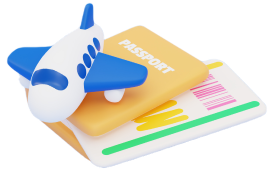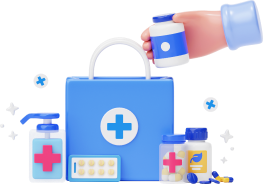-
Visas & Immigration
-
Taxes
-
Cost of Living
-
Companies Hiring
-
Relocation Companies
-
Jobs
-
Salaries
-
Healthcare & Insurance
-
Webinars
Healthcare in Denmark

Lais Cattassini
Lais is a Brazilian journalist and copywriter with over 17 years of experience, writing about things she knows really well (travelling, cinema, social media trends) and things she loves learning about.

Oleksandra Dosii
Oleksandra is a dedicated marketer with a passion for growing HR-tech products. She believes content marketing is about delivering high-quality content that provides value—not just generating leads. Since 2016, Oleksandra has been involved in tech talent relocation.

Start Advertising

Interesting facts:
- Denmark has a highly digitised healthcare system. Patients can book appointments, access test results, and communicate with healthcare providers online.
- Denmark consistently ranks as one of the countries with the highest patient satisfaction rates in Europe.
- Denmark has a well-organised system for out-of-hours healthcare, including emergency medical services and hotlines for non-emergency health concerns.
Overview of the Danish healthcare system
Denmark provides universal healthcare coverage to all residents. The system is funded primarily through general taxation, which ensures that medical services are free at the point of use. There are no user fees for most services, although some services, like dental care and certain types of specialist treatments, may have associated costs.
General practitioners (GPs) serve as the first point of contact for patients. They are responsible for providing primary care, managing chronic conditions, and referring patients to specialists if necessary. Patients are usually required to have a GP, and they can change their GP if desired.
Denmark has a well-developed network of hospitals that provide a range of services, from emergency care to elective procedures. Hospitals are organised into regions, and each region is responsible for healthcare services within its boundaries.
The Danish healthcare system places a strong emphasis on preventive care, including regular health check-ups, vaccination programs, and health promotion initiatives.
Prescription medications are covered by the public system, but there may be some out-of-pocket costs depending on the medication and the patient's specific circumstances.
How to access the healthcare system in Denmark as an expat
Obtain a CPR Number (Civil Registration Number)
The first and most crucial step to access the Danish healthcare system is to obtain a CPR number, a unique personal identification number. This number is used across all public services, including healthcare.
You must be legally residing in Denmark. This means you have Danish citizenship, a work visa, or a valid residence permit. Once you arrive in Denmark, you need to register with your local municipality. You can do this by visiting the Citizen Service Center (Borgerservice) in your city.
After receiving your CPR number, you will also get a NemID, a digital ID that allows you to access various public services, including online healthcare portals.
Choose a General Practitioner (GP)
Once you have your CPR number, you will be required to choose a General Practitioner (GP). GPs in Denmark act as gatekeepers to the healthcare system, providing primary care and referrals to specialists.
After registering your address and obtaining your CPR number, you will receive a yellow health insurance card (sundhedskort) by mail, typically within 2-4 weeks. This card includes your CPR number and information about your GP.
In Denmark, all residents are automatically placed in one of two health insurance groups. Group 1 requires you to use your assigned GP as your first point of contact. Group 2 offers more flexibility, allowing you to directly visit specialists without a GP referral. However, there may be additional fees associated with this group. You can change between these groups by contacting your municipality.
You can choose a GP based on location or preference. When registering at Borgerservice, you'll be provided with a list of GPs in your area. You can also change your GP later by applying online through your municipality's website or using the Borger.dk portal.
Accessing Healthcare Services
With your yellow health insurance card and registered GP, you now have access to the Danish healthcare system. You can schedule appointments with your GP for primary care or receive referrals for specialist care if needed.
With your CPR number and health insurance card, you can also access subsidised prescription medications at any pharmacy (Apotek). Medications in Denmark are partially reimbursed by the state, depending on the total annual amount you spend on prescriptions.
Digital Healthcare Access
Denmark is highly digitised, and most of your healthcare needs can be managed online. Access Sundhed.dk to book medical appointments, communicate with your GP or specialists, access your medical records and prescription history, and order repeat prescriptions.
Through the MinSundhed App, you can access similar services on your phone.
Types of health insurance in Denmark
Public Health Insurance (Statutory Health Insurance)
The Danish healthcare system is built around a universal public health insurance model. All residents, including citizens and legal residents, are automatically covered under this system. It is divided into two groups, which offer different levels of coverage and access to care.
Group 1: Default Public Health Insurance
Most people in Denmark (around 98%) are enrolled in Group 1, which offers comprehensive healthcare services through a GP-centered system.
All general medical treatments, hospital stays, and specialist visits (with a referral) are covered by the public system. Emergency care is also fully covered. There are no co-payments for doctor visits, surgeries, or hospital stays.
Group 2: Public Health Insurance with More Flexibility
Group 2 is an option for residents who prefer more direct access to specialists and medical services.
You are not required to choose a specific GP and can visit any GP or specialist without needing a referral. This offers greater flexibility but may result in longer wait times and more out-of-pocket expenses for some services.
Medical fees for visits to specialists without a referral are only partially covered by the public system, so patients may need to pay some costs themselves. This group is usually chosen by individuals who prefer more control over their healthcare choices.
Private Health Insurance (Supplementary Insurance)
While Denmark's public healthcare system is highly efficient and comprehensive, some residents choose to purchase private health insurance to cover additional services, reduce wait times, or gain access to more treatment options. Private insurance is often used to complement the public system.
Supplementary Insurance (Tilvalgsforsikring)
This type of insurance provides coverage for services not fully covered by the public system, such as dental care, optical care, and physiotherapy. It can also cover elective surgeries, alternative treatments (e.g., chiropractic care, acupuncture), and faster access to private hospitals or specialists.
Employers often offer this insurance as part of employee benefits packages.
Complementary Insurance
This insurance covers services like quicker access to private hospitals, specialists, and more individualised treatment plans. It's popular among individuals who want to avoid waiting times in the public system for non-emergency procedures or who seek specialised care.
The major Danish private health insurance companies offering this include Danmark Sygeforsikring and Tryg.
How much does health insurance in Denmark cost?
Denmark's public healthcare system is universal and tax-funded, meaning that all residents are automatically covered without paying direct premiums. The system is financed through income taxes, which are relatively high but cover a wide range of healthcare services.
While most medical services are free at the point of use, there are some out-of-pocket expenses, such as prescription medications and dental care.
For prescription medications, the Danish government operates a reimbursement system where the more you spend on prescription drugs in a year, the more the government reimburses. For annual medication costs below DKK 1,070 (approx. €140), you pay 100% of the cost. For annual costs between DKK 1,070 (€140) and DKK 2,570 (€345), you pay 50%. For annual costs between DKK 2,570 (€345) and DKK 6,240 (approx. €840), you pay 25%. For costs over DKK 6,240 (above €840), you pay 15%.
This tiered system ensures that those with chronic conditions or high prescription costs receive higher subsidies.
Private health insurance plans can range from DKK 1,000 to DKK 5,000 per year (approx. €135-€670), depending on the coverage and age of the insured person. Basic plans covering dental and physiotherapy are less expensive, while comprehensive plans that include private hospital care and faster specialist access cost more.
Some of the most popular health insurance companies in Denmark are Danica Pension, Tryg, Topdanmark, Codan, and PFA.
Expat health insurance in Denmark
Expats staying in Denmark for less than three months do not have access to Denmark's public healthcare system, so they are not automatically covered under the national health insurance. However, they are strongly advised to have private or travel health insurance to cover any healthcare costs during their stay.
If you are from an EU/EEA country, you can use your European Health Insurance Card (EHIC) for necessary medical treatment during short stays. Non-EU/EEA citizens will need to arrange private health insurance, either from their home country or Denmark, to cover any medical expenses during their stay.
Expats staying in Denmark for more than three months and holding a valid residency permit are automatically enrolled in Denmark's public healthcare system once they register for a CPR number. This entitles them to the same healthcare benefits as Danish citizens, and no private health insurance is required to access the public system.
English-speaking doctors in Denmark
The Danish national health portal, Sundhed.dk, is a central resource for finding healthcare providers, including general practitioners (GPs), specialists, and hospitals. The website provides information in Danish, but many services are available in English, and it allows you to find English-speaking doctors.
Use the "Find Behandler" (Find Practitioner) to select your region and type of healthcare provider.
You can filter your search by language preference.
Each Danish municipality also has its own website, which often includes information on local healthcare services. Many municipal websites offer an English-language section for newcomers and expats, including information on how to find English-speaking healthcare providers. Copenhagen, for example, offers guidance on documents for expats, how to find housing and information on healthcare services.
What to do in an emergency?
The universal emergency number in Denmark is 112. You should call 112 in any situation that requires immediate assistance from the police, fire department, or ambulance services. Emergency medical care in Denmark is provided free of charge for all residents and visitors in critical situations.
For non-life-threatening medical issues, you should contact your local doctor (GP) or visit a hospital's emergency room (Akutmodtagelse), but this requires a referral unless it's urgent.
In the Capital Region (Copenhagen area), you can call 1813 for urgent but non-life-threatening medical advice. This service is available 24/7 and can guide you on whether you need to go to the emergency room, visit a doctor, or handle the situation at home. The operators speak English and can advise on where to go and whether you need a prescription.
Need expat health insurance?

Fill out this form

Shoot us an email with your inquiry at [email protected].




















